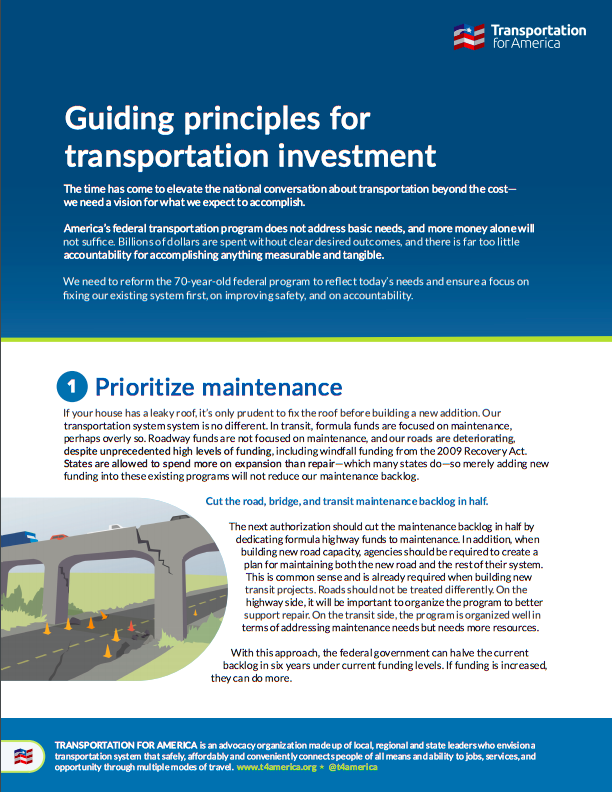Congress’ FAST Act provides needed funding certainty but fails to move the country forward
After the House and Senate took action to approve the final five-year, $305 billion Fixing America’s Surface Transportation (FAST) Act transportation authorization this week, T4America director James Corless offered this statement:
“We’re grateful that Congress finally moved beyond short-term extensions and passed a five-year transportation bill with funding to provide the multi-year certainty states and cities have been clamoring for to bring their ambitious plans to life. The bill provides modest increases in funding for local communities, includes passenger rail in the surface authorization for the first time ever — recognizing its key role in connecting communities big and small — and makes it easier for cities and towns to apply for low-cost federal financing for locally-driven infrastructure improvements and transit-oriented development.
“While this new law does make a handful of notable improvements, the final product misses the mark on far too many counts and overall doubles down on a status quo approach to investing in transportation.
“The majority of our elected representatives, along with most of the traditional transportation industry, were all too willing to pass a bill at almost any cost. Only a handful of elected leaders were willing to even discuss raising or indexing the gasoline tax to pay for the level of investment our country desperately needs.
“When it comes to policy, this bill falls far short of the transformational, outcome-based approach needed to keep our cities and towns prospering as our nation experiences profound shifts in demographics, consumer preferences and technology.
“The FAST Act fails to increase transparency and accountability in the process of picking transportation projects; a process that the taxpaying public finds murky, mysterious, and overly political. Though it does slightly increase funding directly to metropolitan areas, it failed to give smaller communities any more control over federal funding. It doesn’t increase the amount of money awarded competitively to the best projects on the merits and makes an enormous cut to the innovative TIFIA low-cost financing program for local projects. And though daily headlines are filled with an increasing number of stories about autonomous vehicles or shared mobility services changing the landscape of our cities, this bill is virtually silent on both counts.
“While states and metropolitan regions will enjoy the certainty of funding that they’ve not had in seven or eight years, they’ll be stuck with yesterday’s policies until 2020, and the tab will be passed on to our children. The FAST Act represents a major missed opportunity to do something much better that the country needs and deserves.”






Pingback: Obama Signs $305B FAST Act: Bikes and Autonomous Cars Win Funding - Fortune
Pingback: President signs 5-year transportation bill into law | Chicago Activism
Pingback: FAST Act contains new ways to finance transit-oriented development | Smart Growth America